Tanzania is the dream destination for many travelers who love nature and seek the thrill of a lifetime. The country has some of the most well-known national parks, including the Serengeti, Ngorongoro Crater, and Tarangire National Park.
Guests are welcome to explore the parks with their guides and have opportunities to see special events like the annual wildebeest migration. It’s also common for visitors to witness special animals like lions, elephants, and rhinos in their natural habitat.
For travelers looking for something more physically engaging, Tanzania is also home to the tallest mountain in Africa, Mt. Kilimanjaro. This expansive landmass attracts thousands of hikers and climbers each year. While the task may seem daunting, the climb is well worth it for the mountain’s breathtaking views.
With the beautiful scenery to explore in Tanzania, there is something for everyone. The following sections will look at some of the largest cities by area and see what opportunities they provide visitors looking to immerse themselves in the wondrous culture of the county.
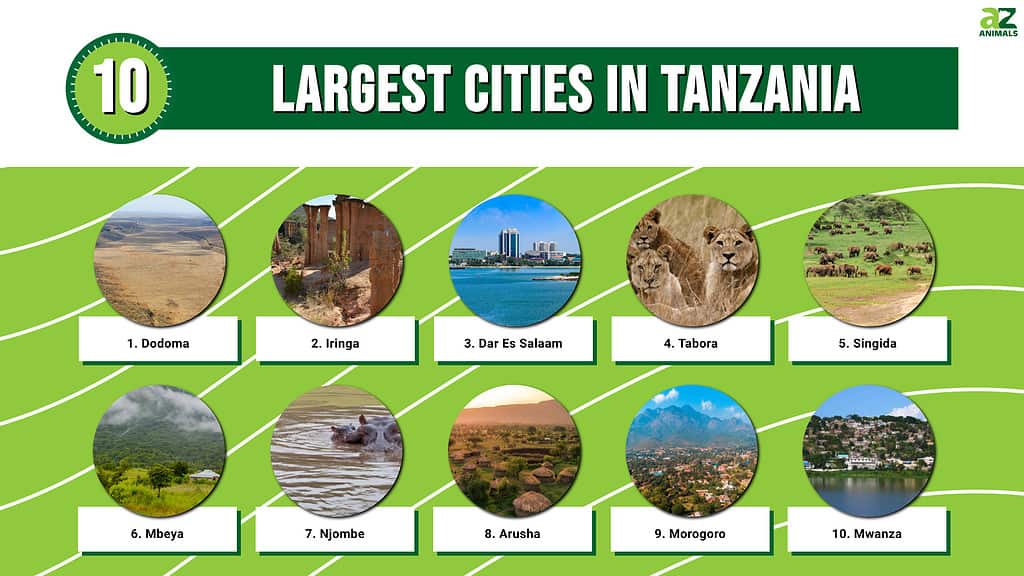
10. Mwanza
Area: 465 km²
Mwanza is referred to as “Rock City” by many locals and travelers for its unique rock formations and granite outcrops. Travelers interested in rock climbing and hiking will be rewarded with a stunning view of Lake Victoria if they traverse the tricky landscapes.
The city also offers other opportunities for travelers seeking a more relaxing time. For instance, guests can take guided tours in the Rubondo Island National Park, where animals such as elephants, giraffes, and chimpanzees reside. Lake Victoria is another great location for travelers looking to spend time on the water.
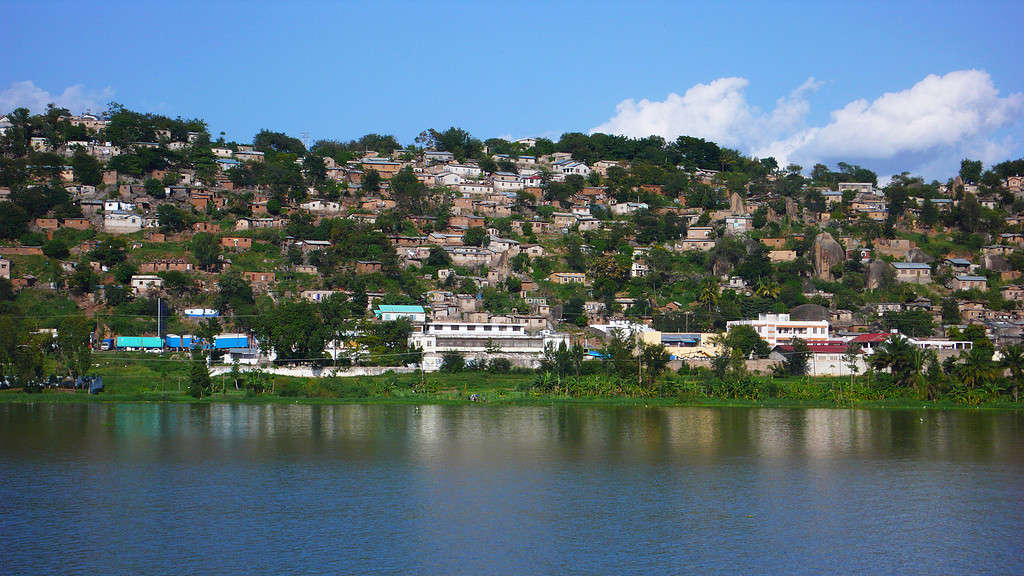
The city of Mwanza, Tanzania, is located on Lake Victoria.
©Danita Delimont/Shutterstock.com
9. Morogoro
Area: 555 km²
The city of Morogoro is an explorer’s playground with a vast mountain range and a national park to explore. Morogoro is located at the foot of the Uluguru Mountains and offers visitors numerous hiking and trekking opportunities. Throughout the area, there are several rare birds and butterflies to uncover.
Along with the wildlife within the Uluguru Mountains, Morogoro is also located near the Mikumi National Park, allowing visitors to get close to popular animals like zebras, elephants, and giraffes. Those looking for the ultimate adventure can camp inside the park and spend a few nights with the animals.
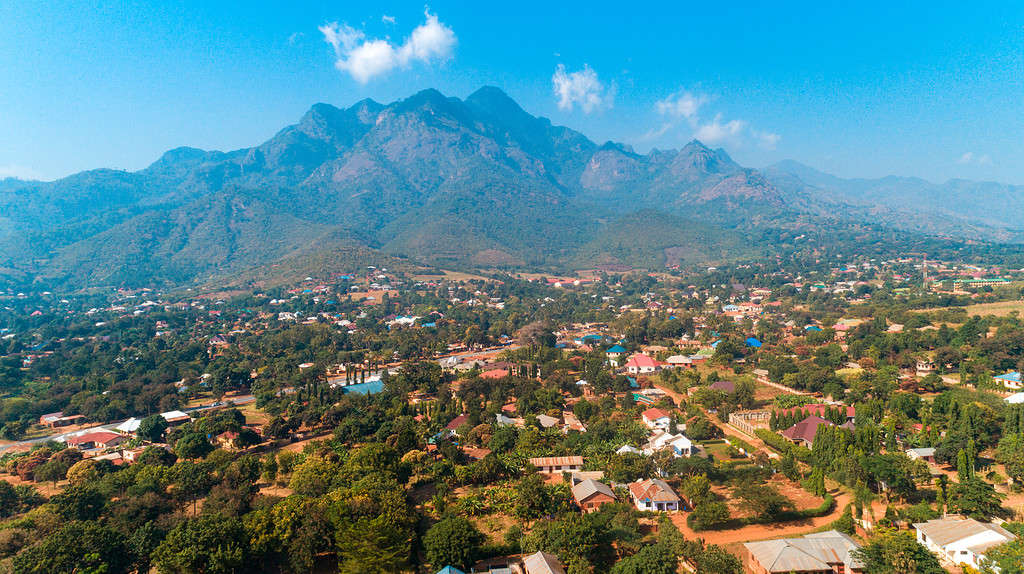
Aerial view of the city and Uluguru mountain range of Morogoro, Tanzania.
©1584169288/Shutterstock.com
8. Arusha
Area: 625 km²
Travelers visiting Tanzania to explore its bountiful wildlife should consider staying or stopping in Arusha. Thanks to the city’s location in northern Tanzania, it’s the perfect place to begin your journey to any of the big three national parks. It’s also closely located to Mount Kilimanjaro, making it the gateway city to many of Tanzania’s great wonders.
However, Arusha is more than just a starting point for your national park adventure. The city also has several lively marketplaces like Maasai Market, the Central Market, and the Uhuru Market. Travelers visiting the area in August can also experience the Nane Nane Market, a large agricultural fair that takes place each year.
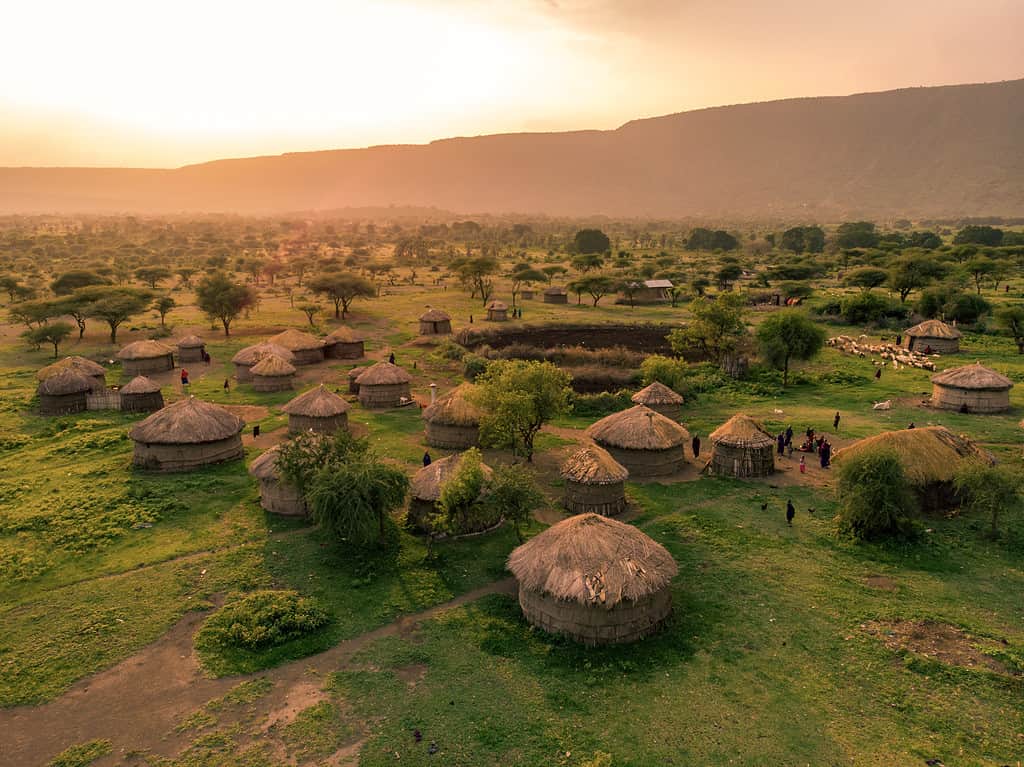
The Maasai people live in small villages outside of Arusha.
©Gideon Ikigai/Shutterstock.com
7. Njombe
Area: 698 km²
Even though the country is full of opportunities to see wildlife, other locations like Njombe offer travelers a more laid-back experience. Njombe is an agricultural region famous for growing tea, coffee, and avocados. Most local farms will allow visitors to tour the grounds and learn about what goes into producing the goods before providing fresh samples for the group.
Njombe also has a wide range of scenic spots to explore, including several waterfalls. While a few locations are a little further away, travelers can easily reach Igowole Waterfall and Lupila Waterfall within 30 to 45 minutes.
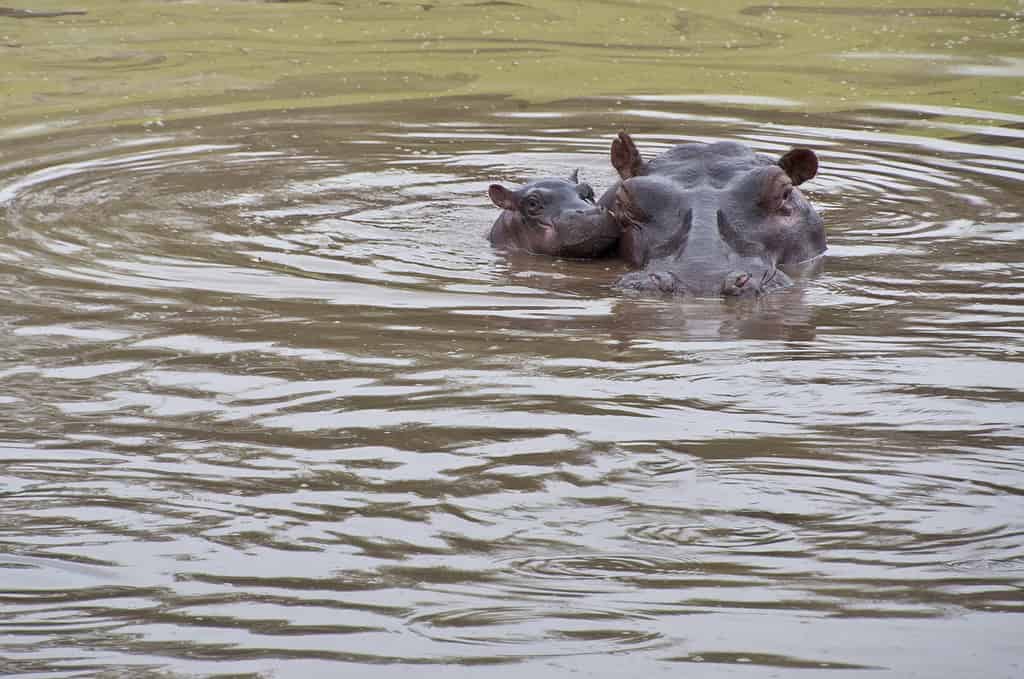
It’s common to see wild hippos throughout the Njombe region.
©iStock.com/nwbob
6. Mbeya
Area: 707 km²
While travelers know about Mount Kilimanjaro, not many are familiar with the second-largest peak in Tanzania. However, the mountain range and surrounding wildlife make Mbeya a perfect destination for travelers looking to experience the nature of Tanzania in a little less crowded area.
Along with the picturesque Mbeya Peak, guests can explore several breathtaking waterfalls in the area. In addition, Mbeya offers a vibrant marketplace in the city where travelers can mingle with locals and experience the country’s culture firsthand.
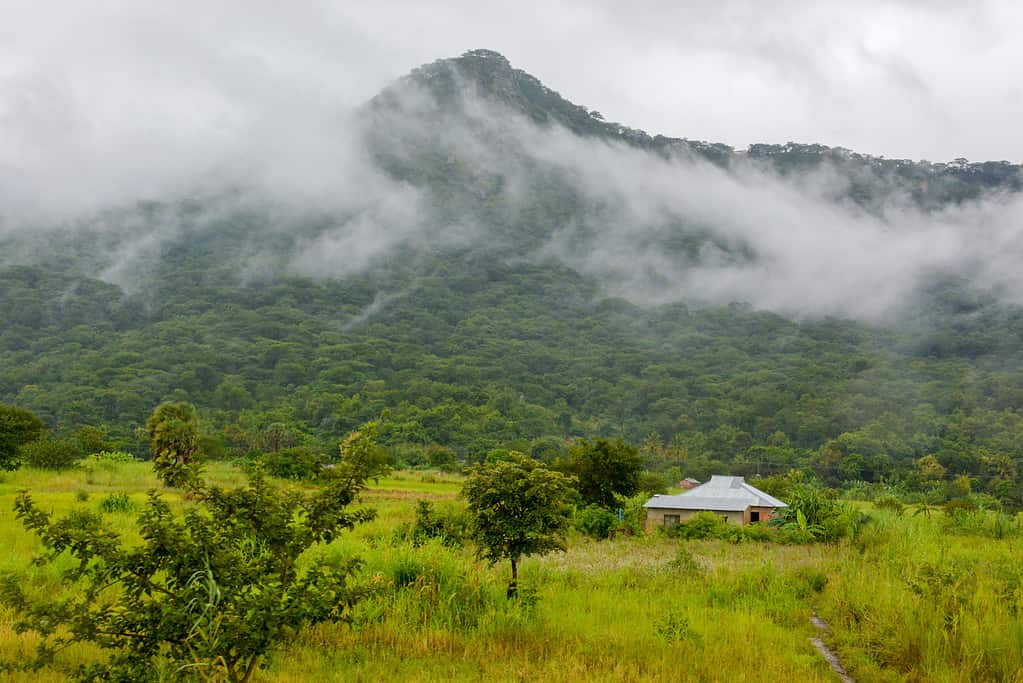
Mbeya Peak provides endless opportunities for travelers to explore.
©Wanangwe Muchika/Shutterstock.com
5. Singida
Area: 1,272 km²
Many locations in Tanzania offer travelers the opportunity to see rare or exotic animals. However, Singida also allows travelers to learn about the region’s past with several historical sites. One of the most popular attractions is the ruins of the Kolo Rock Paintings — dating back to the Stone Age.
Although Singida is known for its historical importance, it is still home to a stunning nature scene. The region is home to rolling plains and rugged hills that allow travelers to experience the area’s wildlife firsthand.
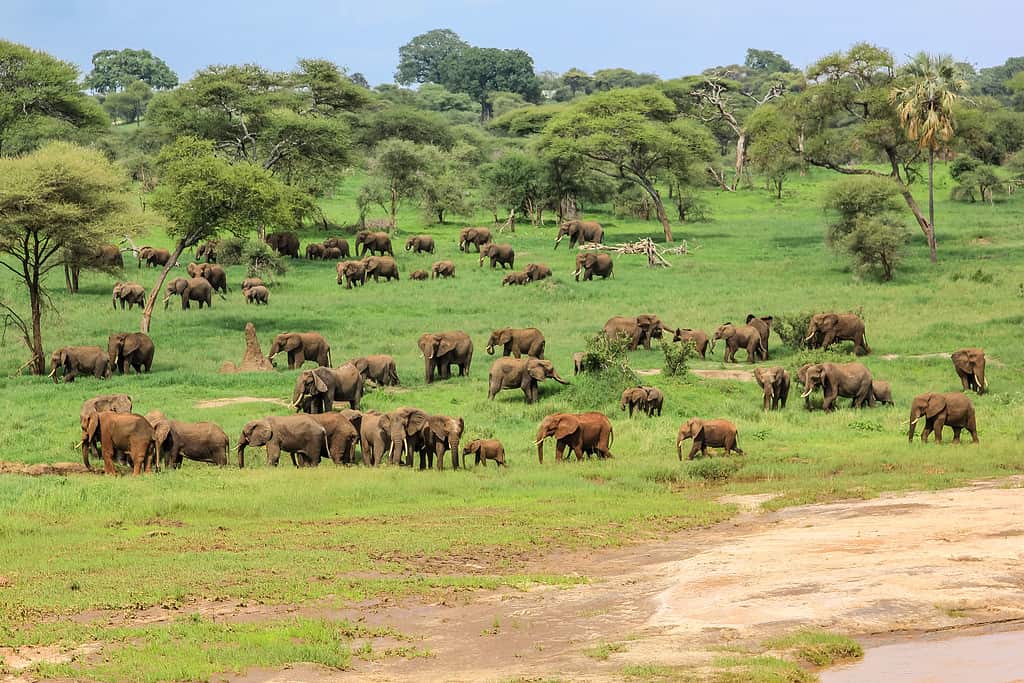
Tarangire National Park is within driving distance from Singida.
©Benny Marty/Shutterstock.com
4. Tabora
Area: 1,387 km²
Travelers looking for a city to add to their itinerary that is rich in history should consider Tabora. Tabora has long been a pillar for trade and commerce in East Africa and is an important city for Tanzania. The region has several historical sites for visitors to explore, including the Old Fort and nearby Bismarck Rock.
Tabora also operates one of the most important railway junctions in Tanzania. Visitors interested in learning more about the railway and its significance can visit the Tabora Railway Museum.
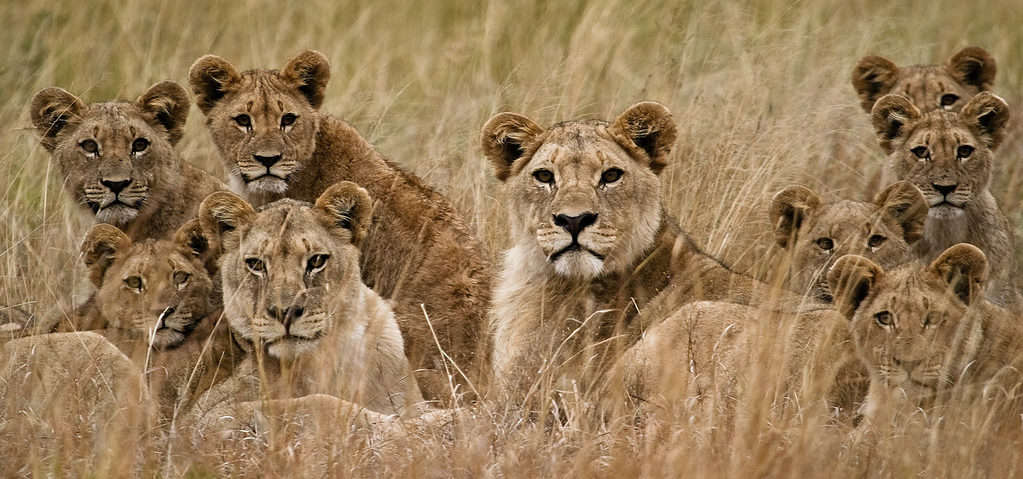
Travelers have the opportunity to see lions in Tabora’s Kaliua Wildlife Reserve.
©Riaan van den Berg/Shutterstock.com
3. Dar Es Salaam
Area: 1,393 km²
One thing that sets Dar es Salaam apart from many other cities in Tanzania is its incredible beaches. Places like Coco Beach, Kunduchi Beach, and Mbudya Island are all close to the city and offer travelers an opportunity to relax by the water or participate in water sports.
Dar es Salaam is also full of historical locations that are worth exploring. For instance, the National Museum of Tanzania is located in the city and offers a look back at the history and culture of the nation.
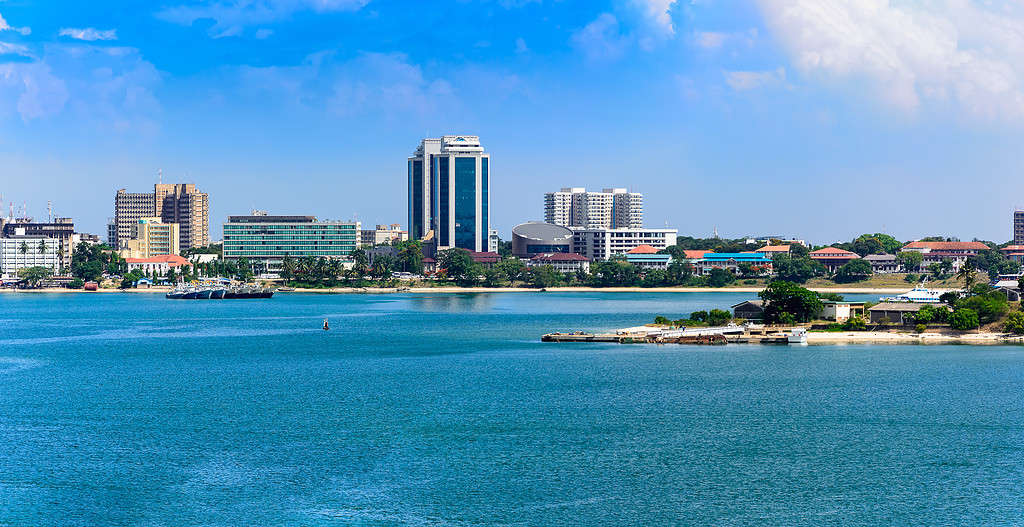
Dar Es Salaam is home to some of the best beaches in Tanzania.
©Igor Grochev/Shutterstock.com
2. Iringa
Area: 1,459 km²
Since there is so much to explore in Tanzania, finding time to relax and enjoy the region can be challenging. Adding a location like Iringa to your travel list can be a great way to build a break into your busy schedule. The area is quieter than the other large cities mentioned throughout the guide but still offers plenty of activities for travelers.
For example, Iringa is home to the Isimila Stone Age Site, where visitors can view artifacts from over 60,000 years ago. The locals of Iringa are also very welcoming and allow travelers to experience traditional dances, music, and goods.
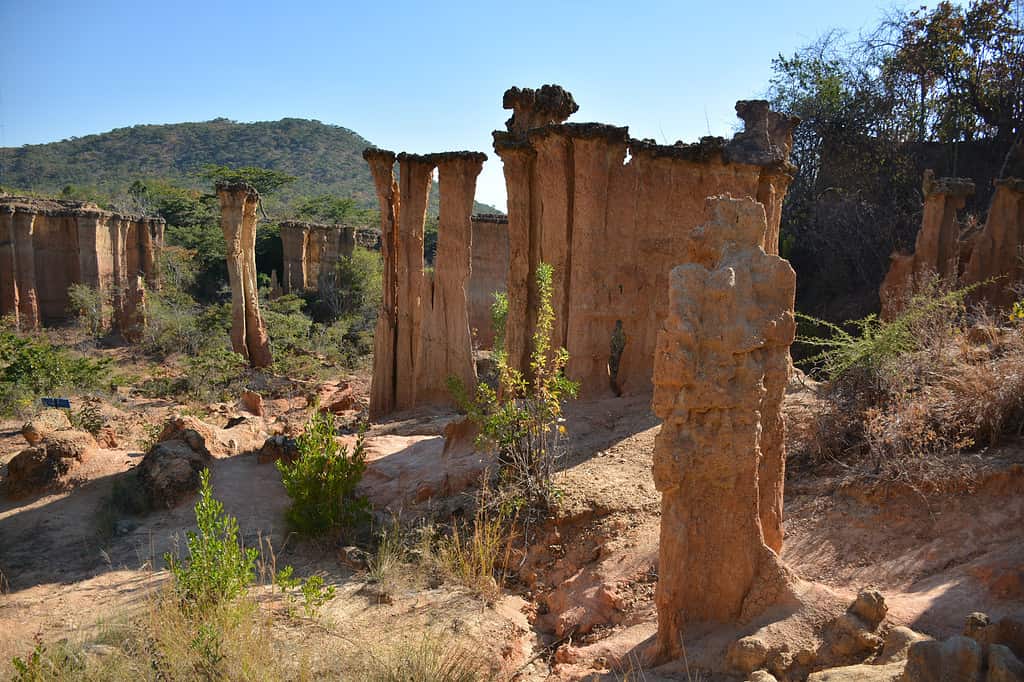
Travelers in Iringa can visit the Isimila Stone Age Site.
©Sarah Bastianello/Shutterstock.com
1. Dodoma
Area: 2,669 km²
Travelers with only a few days to spend in Tanzania should stop in Dodoma, the country’s capital. Dodoma offers a variety of opportunities for visitors to experience the country’s culture through political, historical, and cultural sites. For instance, not only is the National Assembly in Dodoma, but guests can also visit the Old Boma Museum while in town.
Dodoma is also located in the heart of the country, providing beautiful scenery for travelers to explore. One of the most popular natural attractions is the Rift Valley escarpment, where travelers can hike and explore the local flora and fauna.
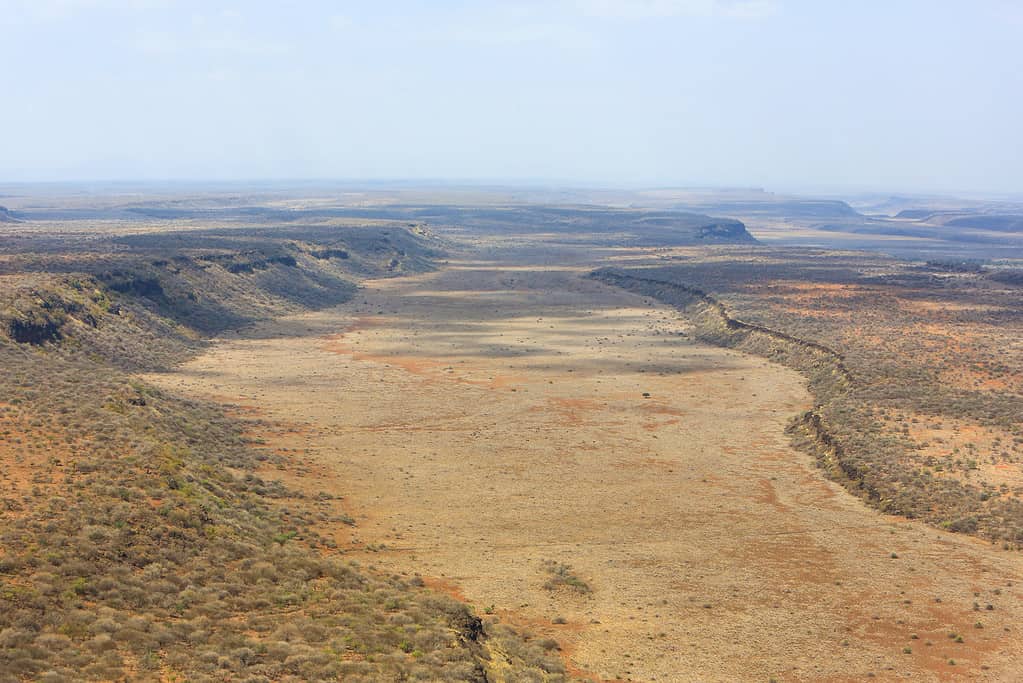
The Great Rift Valley stretches through multiple countries, including Tanzania, Kenya, and Ethiopia.
©JordiStock/Shutterstock.com
Summary of the 10 Largest Cities in Tanzania
| Rank | City | Size in Square Kilometers |
|---|---|---|
| 10 | Mwanza | 465 km² |
| 9 | Morogoro | 555 km² |
| 8 | Arusha | 625 km² |
| 7 | Njombe | 698 km² |
| 6 | Mbeye | 707 km² |
| 5 | Singida | 1272 km² |
| 4 | Tabora | 1387 km² |
| 3 | Dar Es Salaam | 1393 km² |
| 2 | Iringa | 1459 km² |
| 1 | Dodoma | 2669 km² |
The photo featured at the top of this post is © Paul Hampton/Shutterstock.com
Thank you for reading! Have some feedback for us? Contact the AZ Animals editorial team.






